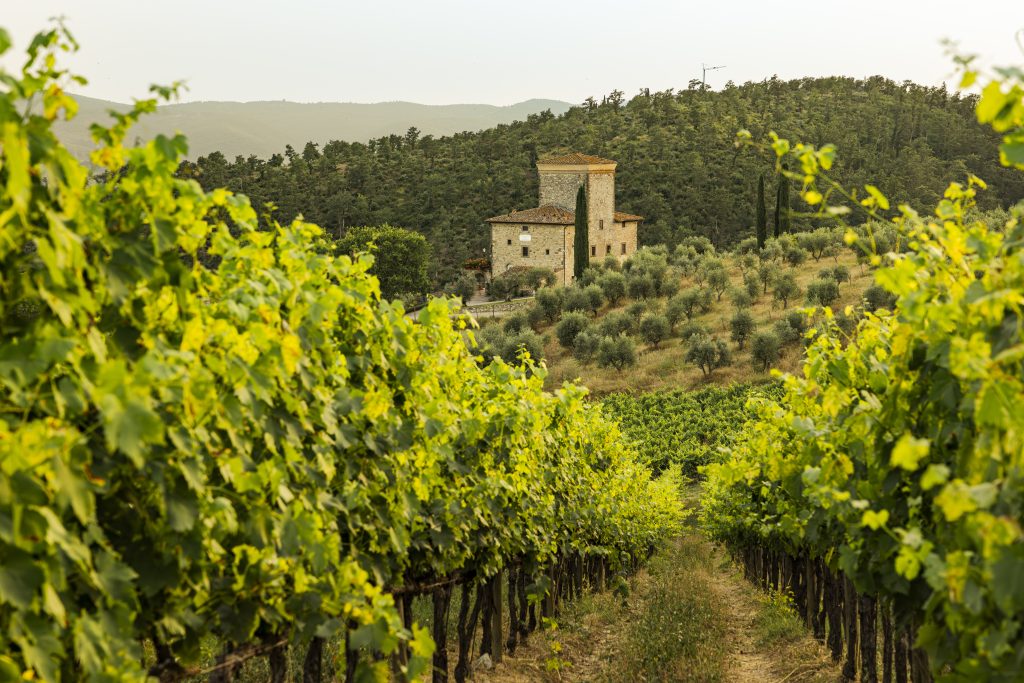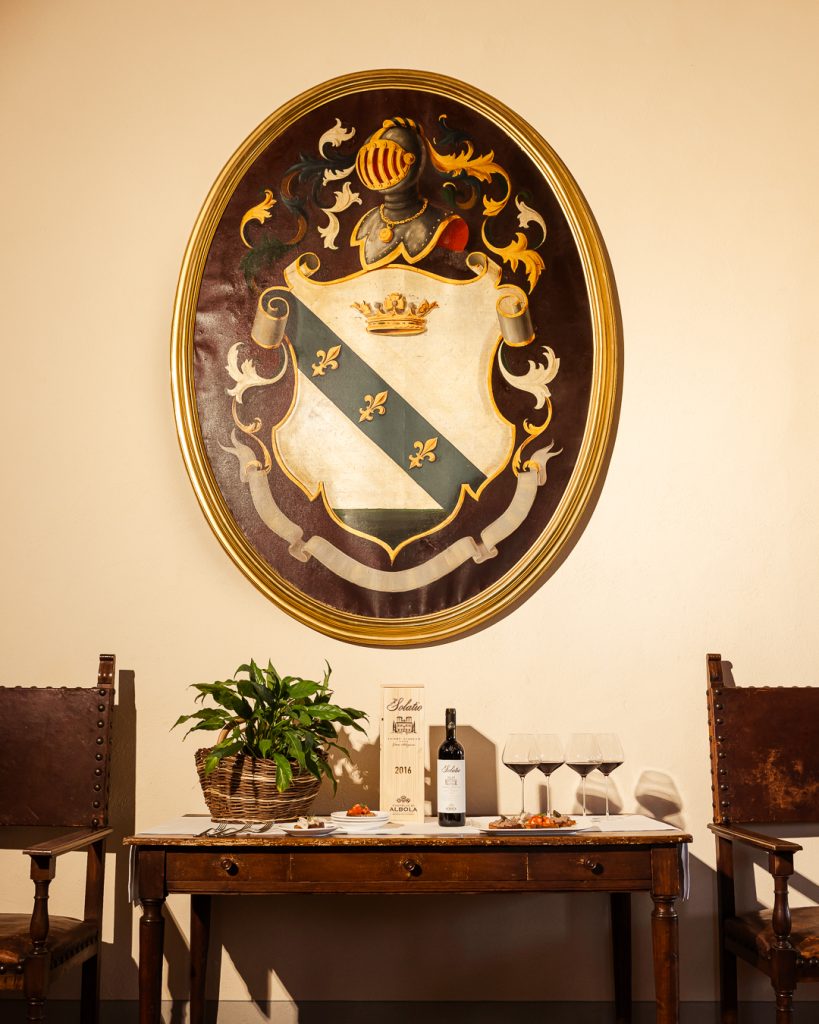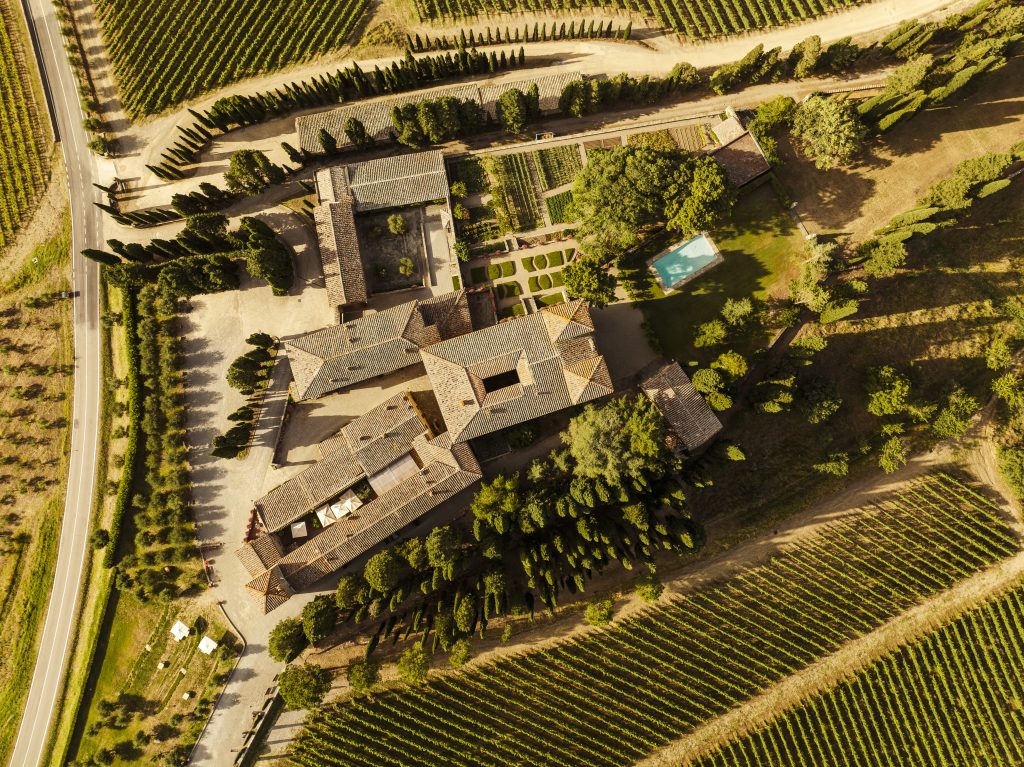This website uses cookies so that we can provide you with the best user experience possible. Cookie information is stored in your browser and performs functions such as recognising you when you return to our website and helping our team to understand which sections of the website you find most interesting and useful.
Il Solatío: the fresher side of Chianti’s Gran Selezione
Single-vineyard Chianti Classico Il Solatío is a relatively young wine, but has secured its status thanks to a winning mix of soil, aspect and altitude – not to mention being an early adopter of the Gran Selezione classification. Richard Woodard reports.

For just a moment, we’ve been transported from the plush surroundings of London’s Haberdashers’ Hall high into the Tuscan hills above Radda-in-Chianti. It’s a small vineyard parcel – only one hectare, all told – and its steep slope is heliotropically tilted towards the south-east.
“As a soil, it’s completely rocky,” explains Alessandro Gallo, winemaker at Zonin1821-owned Castello di Albola. “You don’t see the earth at all. And when you see the rock, you say: ‘How is it possible for a vineyard to grow here?’” In fact, they once dug down between the vines, finding soil at a depth of 2-3m – and vine roots. The Sangiovese – or Sangioveto, to give the grape its local name – has to work hard here.
The vineyard is Il Solatío, the source of a Chianti Classico DOCG Gran Selezione ever since that extra quality tier was introduced a decade ago. But this is a wine, and a vineyard, that is surprisingly young: planted in 1998/9 (“So it’s in a good time,” says Gallo), first vintage in 2006, a Gran Selezione from the 2010 vintage.
In that brief time, Il Solatío has secured its status – Gallo describes it as “a truck that pulls the other [Castello di Albola] labels” – thanks to a combination of its low-fertility, calcareous alberese soil, its aspect and its altitude. Located in the eastern part of the Chianti terrain, Il Solatío sits at 550-580m above sea level, which is close to the local limit for Sangiovese (Castello di Albola has vineyards above 600m, but planted to Chardonnay).
“In Solatío never will you find the power,” says Gallo. “It’s usually 13%–13.5%. The wine has tannin, but it has the acidity that’s clean, so it’s not sweet or full-bodied … It’s a wine that can keep for time, again because of that acidity.”
In an effort to express and encapsulate the inherent freshness of the Solatío terroir, the use of oak has become more restrained over the years. In 2006, the wine’s first vintage, 30% of the barriques were new, but by 2012, Gallo had moved to 350-litre tonneaux – and, in 2019, to 500-litre formats. But he isn’t done yet: the plan for the future is to have only one vat of 30 hectolitres, in French oak.
Pulling back on the oak allows for a more eloquent expression of site, and also year. Il Solatío is a wine that wears its vintage on its sleeve, from the sour cherry intensity of current release 2019 to the vibrant power of 2018. Some years – 2016, for instance – show some evolution and tertiary aromas relatively early; but, even in 2008, only the second vintage (“We didn’t produce a wine in 2007; I don’t remember why,” says Gallo with disarming honesty), the promise is evident in its persistent freshness and merest suggestion of smoke.

Then there are the hot years, among them 2012 and 2015. The former remains remarkably fresh, with a high-toned, exotic fruitiness on the nose, but the conditions of the year are more apparent in 2015’s darker, drier fruit character.
“I feel the hot season,” says Gallo of the wine. “It’s not vibrant like 2018, it’s not vibrant like 2016, for example. I feel the wine is a little bitter and the tannin a little dry. Others in Chianti Classico are similar – we feel the heat in 2015. I would drink 2015 now, and keep 2018.”
Talk of the heat raises the inescapable topic of climate change. When Gallo arrived in Tuscany from his native Piedmont 20 years ago, alcohol levels typically hovered around 12.5%; now 14% is the norm. Some producers in the region are even using nets to protect their vines from hail – more reminiscent of Mendoza than Chianti.
“I am from Piemonte, and I remember very well we went into the vineyard in August and September to remove the leaves, to get the sun to be able to mature the grapes,” Gallo recalls. “Now it’s different … But the altitude of Castello di Albola helps us to have fewer problems with climate change. During the late summer into September, we still have a good gap [in temperature] between the day and night.
“The nights are fresher and cooler, and that helps to have concentration of the tannins on the skins, and concentration of flavour. But it’s changing for Castello di Albola, for Chianti Classico and for Radda.”

The entire Castello di Albola vineyard – 110 hectares out of a total estate of 900ha – has been farmed organically since 2019, and Gallo is now working on a carbon absorption project (“I love it,” he says) with Italy’s Ministry of Agriculture.
Meanwhile, Il Solatío has come a long way for a wine that, in its early vintages, was a humble IGT Toscana – “At that point, it was a little project, a very, very small project, so we decided to call it an IGT,” explains Gallo – before becoming one of the early adopters of the new Gran Selezione classification.
At that point, there were 33 estates participating in Gran Selezione; now they number more than 200. For some, its creation has rather squeezed Chianti Classico Riserva between Gran Selezione and ‘basic’ Chianti Classico, but Gallo sees a clear distinction. “For us, Gran Selezione is a single vineyard, it’s a grand cru; riserva is a selection of grapes from the estate; and Chianti Classico is the rest of the world,” he says.
And there’s one more Piemontese connection worthy of note, linking Il Solatío with one of Angelo Gaja’s most famous labels: Sorì. Both words – one in the Tuscan dialect, the other in Piemontese – refer to a hilltop with a sunny exposure.
“In the end, we use this word ‘drinkability’,” says Gallo. “We have acidity, and we have time, and then we see the drinkability of the wine: not heavy, not boring. It’s wine, but for me it’s also a piece of life.”

